Abstract
The survival of indigenous and introduced strains of Azorhizobium caulinodans in flooded soil and in the rice rhizosphere, where in situ Sesbania rostrata was incorporated before the rice crop, is reported. The azorhizobia studied were both root and stem nodulating. In a pot experiment, two crop cycles each of inoculated and noninoculated Sesbania-rice were compared with two crop cycles of flooded fallow-rice. In a field experiment, the effect of repeated incorporation of in situ S. rostrata in the Sesbania-rice sequence was studied. Soils in which inoculated S. rostrata was incorporated contained about 3,000 times more azorhizobia than did soils in the flooded fallow treatment and about 50 times more azorhizobia than did soils in the noninoculated Sesbania treatment. Azorhizobial numbers in the inoculated Sesbania treatment declined toward rice harvest but remained much higher than in the flooded fallow-rice treatment. Repeated incorporation of S. rostrata increased the population density of indigenous soil azorhizobia, whereas the population of inoculated strain ORS571 (Strr Spcr) declined to an undetectable level; this finding suggested low competitiveness by the introduced strain. In the incorporated Sesbania treatment, the rice rhizosphere harbored significantly more A. caulinodans and supported higher nitrogenase activity per plant than did the rhizosphere of the flooded fallow-rice treatment. Sterile rice seedlings inoculated with A. caulinodans showed nitrogenase activity comparable to that of seedlings inoculated with Azospirillum lipoferum 34H, a rice root isolate. Rhizobia from Sesbania aculeata, Sesbania sesban, a Trifolium sp., and Vigna unguiculata did not support appreciable nitrogenase activity.
Full text
PDF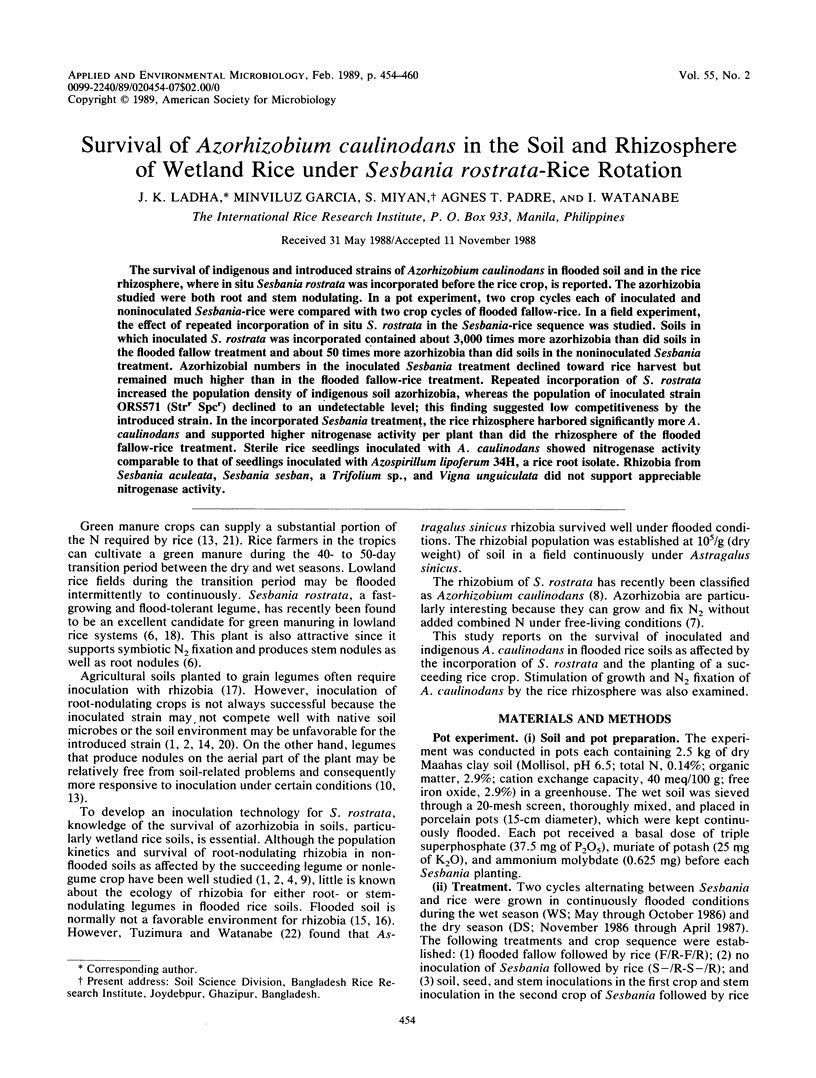
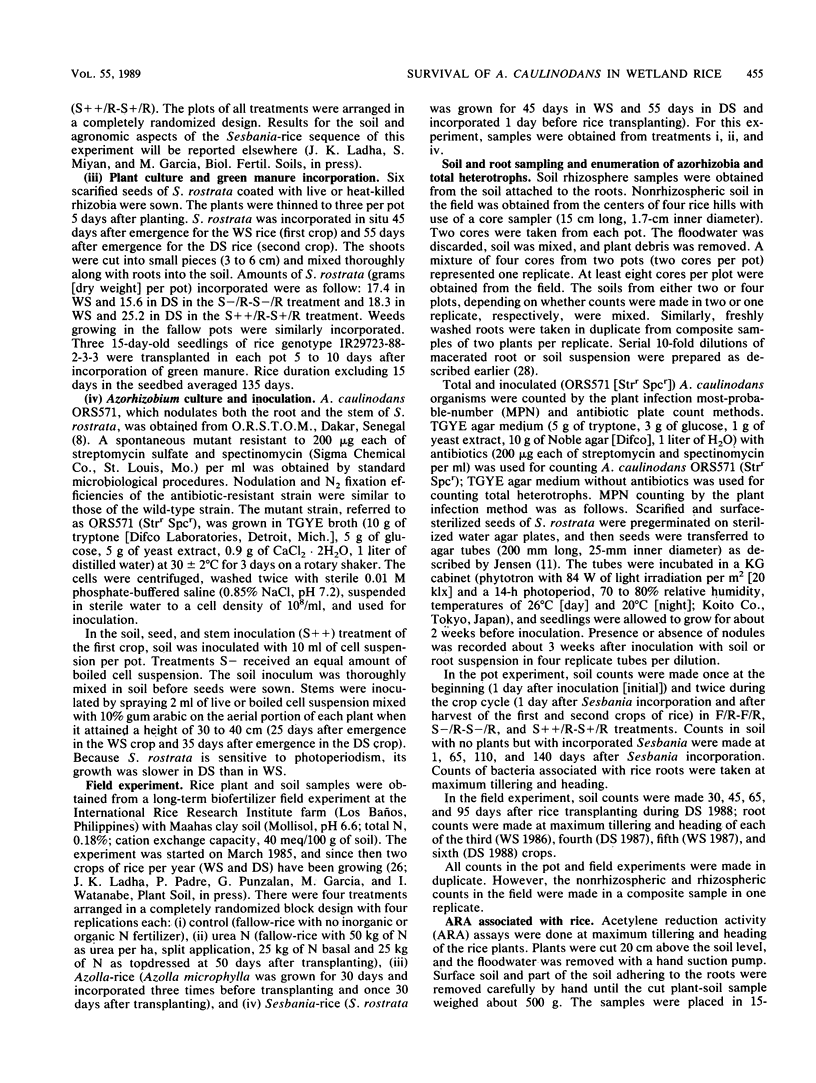
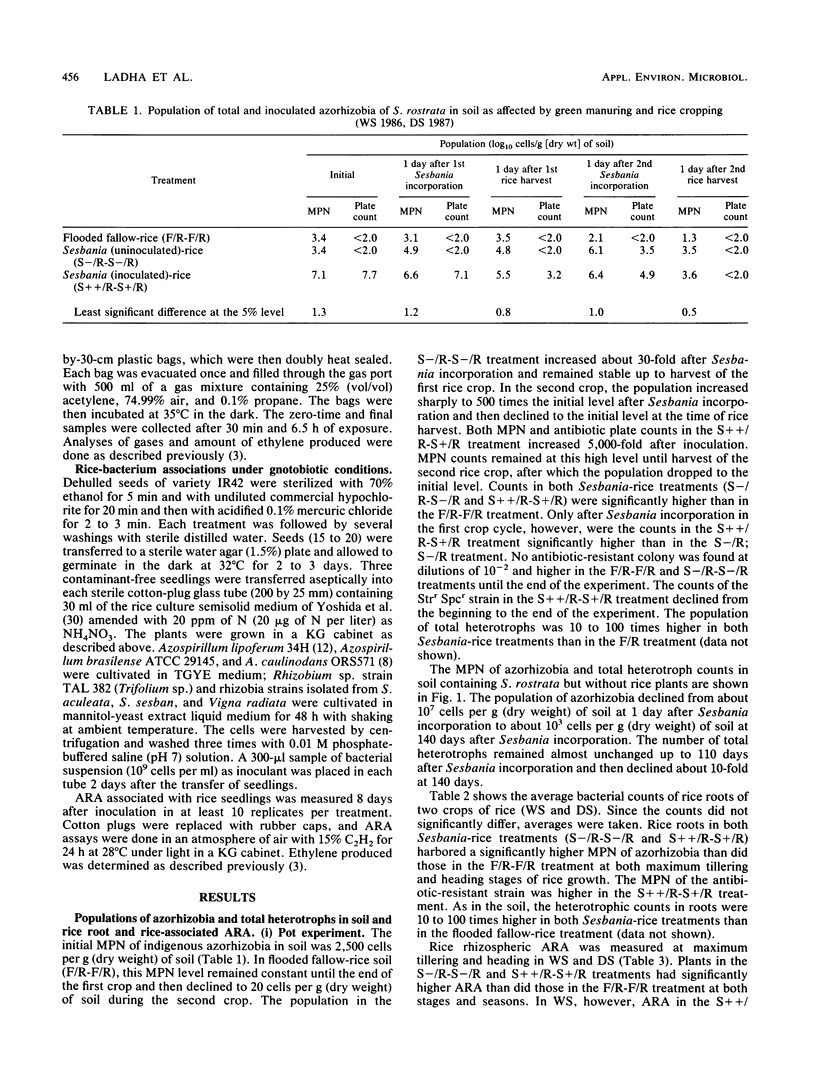
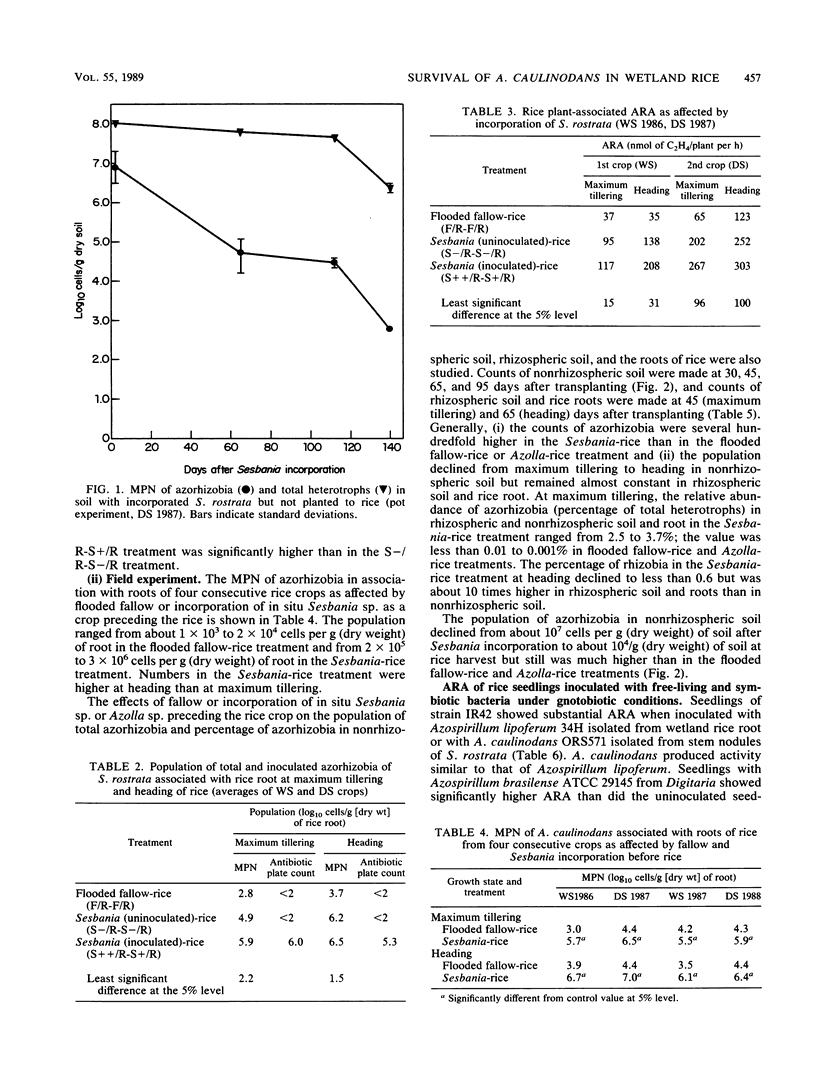
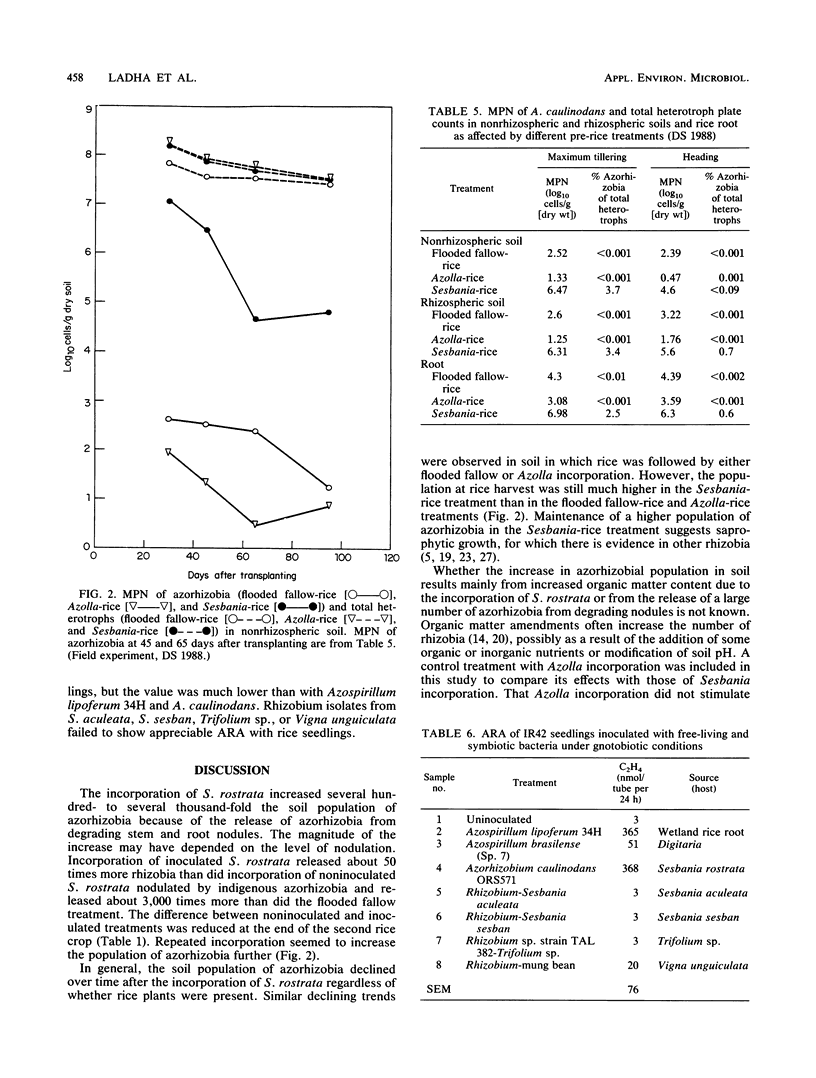
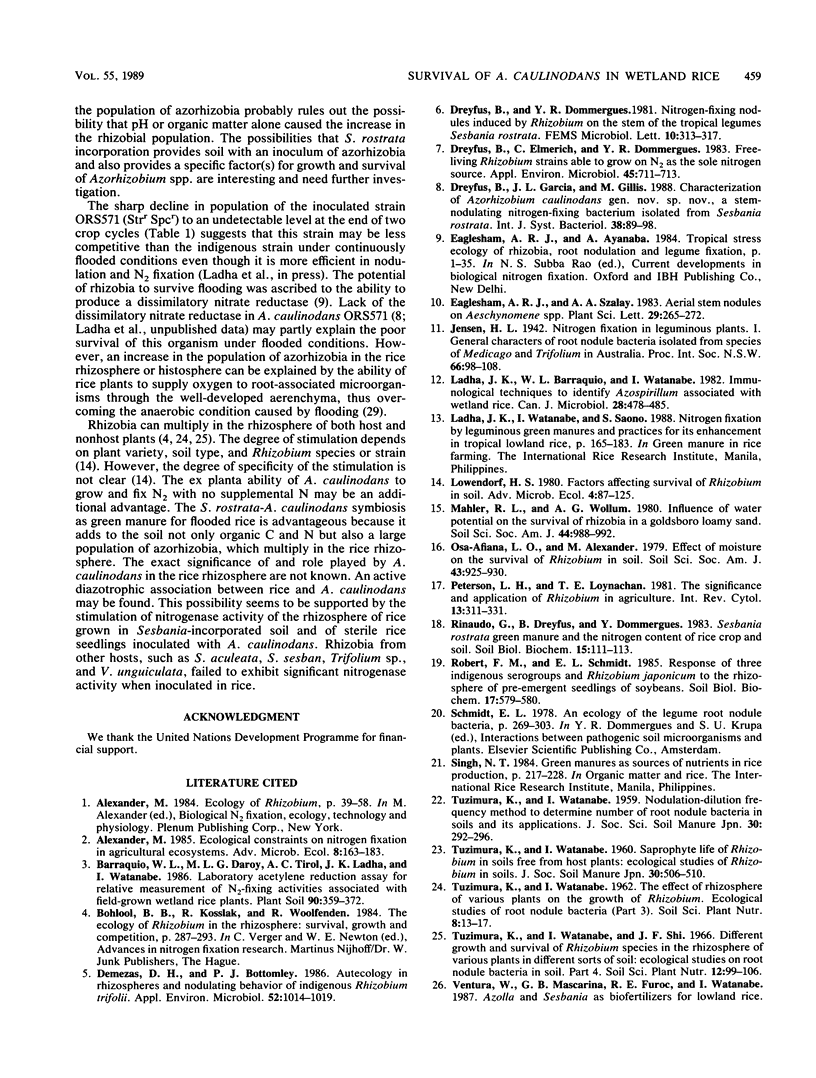
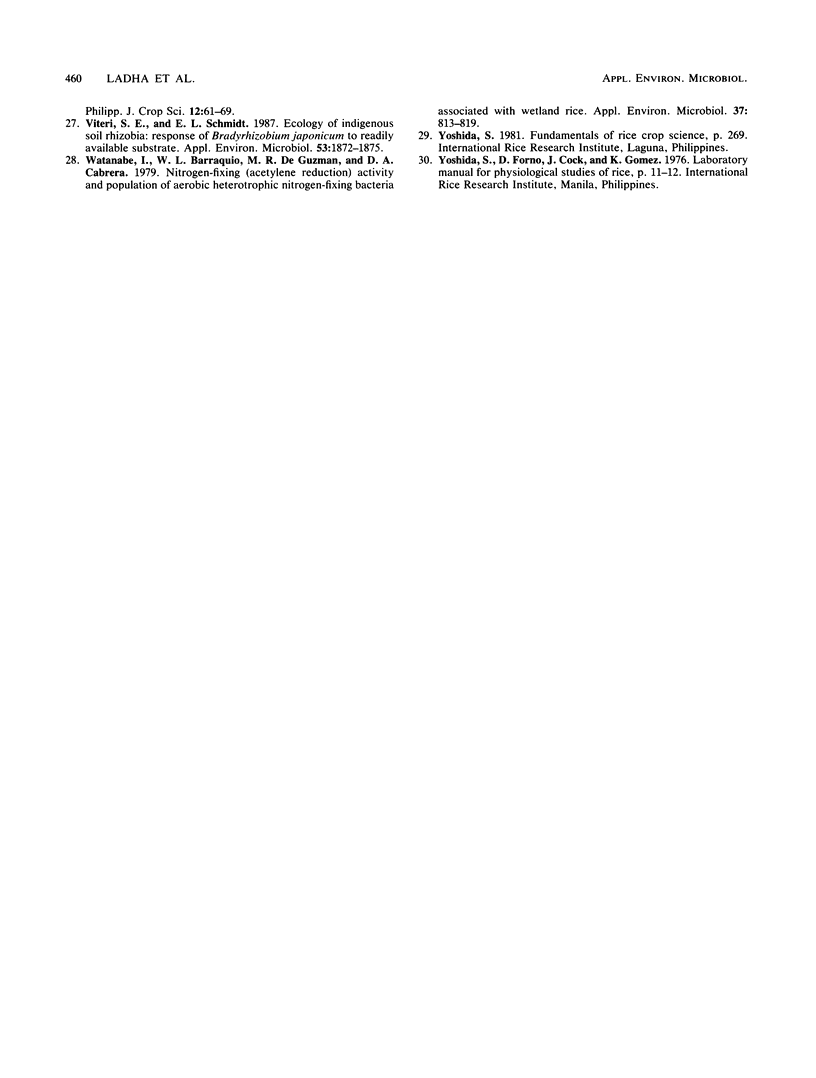
Selected References
These references are in PubMed. This may not be the complete list of references from this article.
- Demezas D. H., Bottomley P. J. Autecology in Rhizospheres and Nodulating Behavior of Indigenous Rhizobium trifolii. Appl Environ Microbiol. 1986 Nov;52(5):1014–1019. doi: 10.1128/aem.52.5.1014-1019.1986. [DOI] [PMC free article] [PubMed] [Google Scholar]
- Dreyfus B. L., Elmerich C., Dommergues Y. R. Free-living Rhizobium strain able to grow on n(2) as the sole nitrogen source. Appl Environ Microbiol. 1983 Feb;45(2):711–713. doi: 10.1128/aem.45.2.711-713.1983. [DOI] [PMC free article] [PubMed] [Google Scholar]
- Ladha J. K., Barraquio W. L., Watanabe I. Immunological techniques to identify Azospirillum associated with wetland rice. Can J Microbiol. 1982 May;28(5):478–485. doi: 10.1139/m82-073. [DOI] [PubMed] [Google Scholar]
- Viteri S. E., Schmidt E. L. Ecology of Indigenous Soil Rhizobia: Response of Bradyrhizobium japonicum to Readily Available Substrates. Appl Environ Microbiol. 1987 Aug;53(8):1872–1875. doi: 10.1128/aem.53.8.1872-1875.1987. [DOI] [PMC free article] [PubMed] [Google Scholar]
- Watanabe I., Barraquio W. L., De Guzman M. R., Cabrera D. A. Nitrogen-fixing (acetylene redution) activity and population of aerobic heterotrophic nitrogen-fixing bacteria associated with wetland rice. Appl Environ Microbiol. 1979 May;37(5):813–819. doi: 10.1128/aem.37.5.813-819.1979. [DOI] [PMC free article] [PubMed] [Google Scholar]


